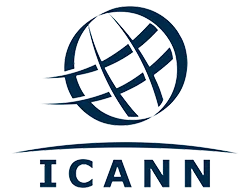Security and Stability Advisory Committee (SSAC)
SAC032 | Executive Summary for Preliminary Report on DNS Response Modification
[PDF, 399 KB]
This preliminary report examines DNS response modification. The Advisory considers two cases of this practice. In the first case, the registrant tuns control of his domain zone file to a name server operator, who processes DNS name queries for the zone in the following manner. Thie agent receives a DNS query for a name. The agent determines that the name in the query does not exist in the zone file it hosts for the domain registrant. Instead of returning a DNS response indicating a non-existent name, the entrusted agent returns a response indicating the name exists and containing an IP address mapping for the queried name of the agent's choosing. This is called a synthesized response.
Modification of a DNS response can also be done "on the fly" by any third party operating an iterative resolver. In this case, the iterative resolver intercepts "name error" responses generated by an authoritative name server and silently alters the response. Specifically, the resolver is configured to change the non-existent name response to one that signals name exists and inserting an IP address mapping for the queried name of the third party operator's choosing. In both cases, the operators benefit in some manner from this "DNS rewrite", e.g., through advertising or services offered at the host identified in the response message.
SSAC notes with some concern that DNS response modification may be performed without notice to the registrant or user, and without consent.
Modifying content and redirecting users to hosts that may not be known to or authorized by the registrant sets a worrisome precedent for applications other than web, e.g., email, instant messaging, and Internet Telephony. SSAC further notes that in both cases, the address is associated with a web page containing some form of advertising, marketing, or customized search. This site is neither operated by the registrant, nor can the registrant take measures to ensure that it is operated as securely as it operates its own sites.
This initial report focuses on explaining the effects of and unintended consequences to users, domain registrants, and those who rely on non-existent domain responses for error reporting and administrative purposes. Some of the possible, unintended consequences of DNS response modification create security and operational stability issues for registrants, e.g., address mapping conflicts, vulnerability to attack from systems identified as subdomains of the registrant¹s domain (and thus conventionally viewed as trustworthy). SSAC also notes that DNS response modification does not merely suppress an error response but alters the contents the domain registrant published in his zone file.

